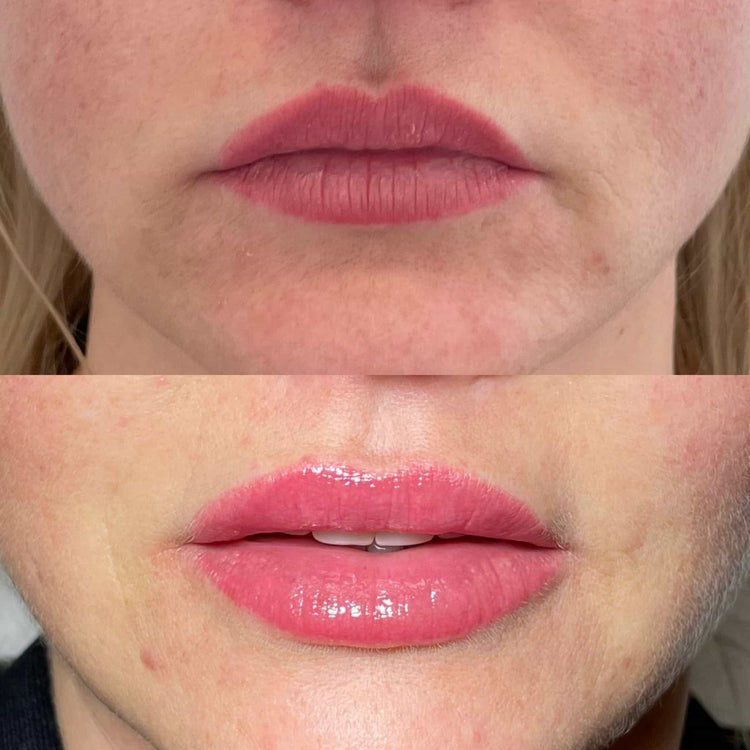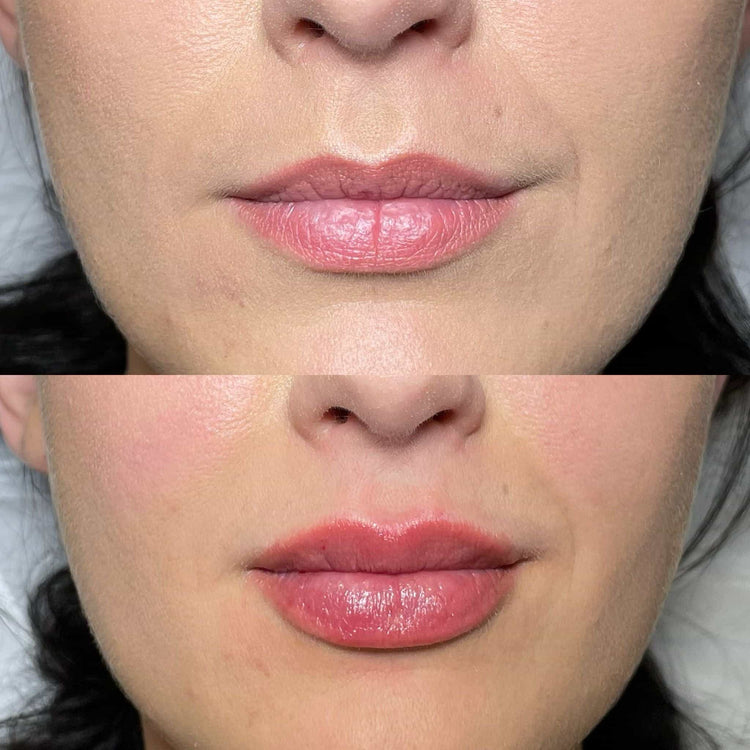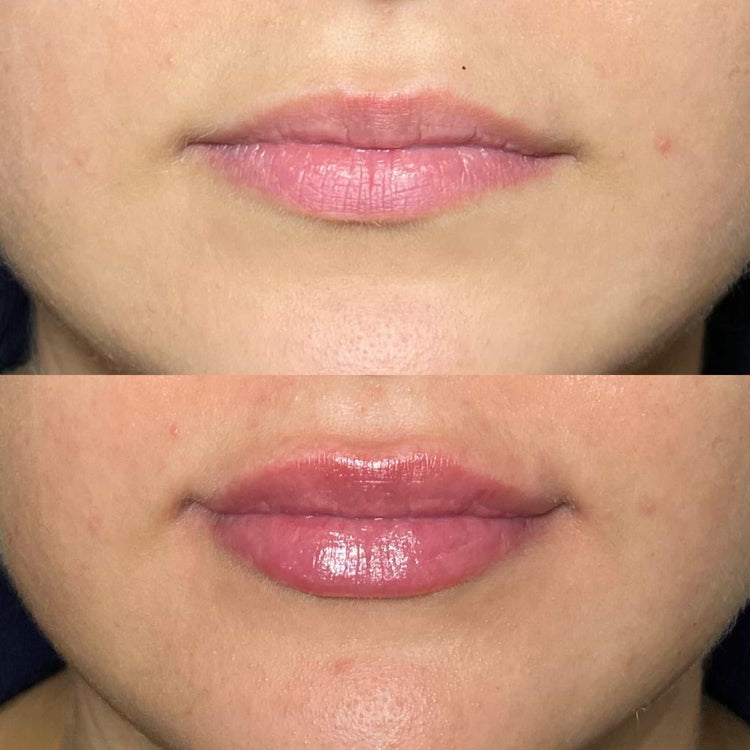Reversibility of Lip Fillers
Lip fillers have become increasingly popular, offering a non-surgical way to enhance lip volume and shape. However, many potential patients wonder about their permanence. Can lip fillers be reversed if desired? Leading experts in the UK shed light on this question, exploring the factors influencing reversibility and the available options for those who seek changes.
Temporary vs. Permanent Fillers
Lip fillers are designed to provide temporary enhancements. They typically last anywhere from 6 months to a year or longer, depending on the type of filler used, individual metabolism, and lifestyle factors like sun exposure and smoking. Most lip fillers are composed of hyaluronic acid, a naturally occurring substance in the body that can be broken down by an enzyme called hyaluronidase.
This means that if you decide you don’t want the results anymore, a simple injection of hyaluronidase can reverse the effects of most hyaluronic acid-based fillers. The enzyme effectively dissolves the filler, allowing your body to naturally reabsorb it. This process is generally safe and relatively quick, often taking just minutes.
There are permanent lip fillers available on the market, primarily composed of poly-L-lactic acid (PLLA). Unlike hyaluronic acid fillers, PLLA stimulates collagen production, leading to a more gradual and long-lasting volumisation effect. Because PLLA is absorbed over time and integrates with your tissues, reversing its effects is much more complex and may require surgical intervention.
Dissolving Lip Fillers
Lip fillers are designed to provide temporary enhancements. They typically last anywhere from 6 months to a year or longer, depending on the type of filler used, individual metabolism, and lifestyle factors like sun exposure and smoking. Most lip fillers are composed of hyaluronic acid, a naturally occurring substance in the body that can be broken down by an enzyme called hyaluronidase.
This means that if you decide you don’t want the results anymore, a simple injection of hyaluronidase can reverse the effects of most hyaluronic acid-based fillers. The enzyme effectively dissolves the filler, allowing your body to naturally reabsorb it. This process is generally safe and relatively quick, often taking just minutes.
There are permanent lip fillers available on the market, primarily composed of poly-L-lactic acid (PLLA). Unlike hyaluronic acid fillers, PLLA stimulates collagen production, leading to a more gradual and long-lasting volumisation effect. Because PLLA is absorbed over time and integrates with your tissues, reversing its effects is much more complex and may require surgical intervention.
Factors Affecting Reversibility
Lip fillers are designed to provide temporary enhancements. They typically last anywhere from 6 months to a year or longer, depending on the type of filler used, individual metabolism, and lifestyle factors like sun exposure and smoking.
Most lip fillers are composed of hyaluronic acid, a naturally occurring substance in the body that can be broken down by an enzyme called hyaluronidase. This means that if you decide you don’t want the results anymore, a simple injection of hyaluronidase can reverse the effects of most hyaluronic acid-based fillers.

The enzyme effectively dissolves the filler, allowing your body to naturally reabsorb it. This process is generally safe and relatively quick, often taking just minutes. There are permanent lip fillers available on the market, primarily composed of poly-L-lactic acid (PLLA). Unlike hyaluronic acid fillers, PLLA stimulates collagen production, leading to a more gradual and long-lasting volumisation effect.
Because PLLA is absorbed over time and integrates with your tissues, reversing its effects is much more complex and may require surgical intervention.
Expert Opinions from the UK
The increasing popularity of lip fillers has sparked curiosity about their permanence. Lip fillers are designed to provide temporary enhancements, typically lasting anywhere from 6 months to a year or longer depending on various factors like filler type, individual metabolism, and lifestyle choices. Most commonly, lip fillers utilize hyaluronic acid, a natural substance in the body that can be dissolved by an enzyme known as hyaluronidase.
Dr. Sarah Jones – Consultant Plastic Surgeon
Lip fillers are designed to provide temporary enhancements. They typically last anywhere from 6 months to a year or longer, depending on the type of filler used, individual metabolism, and lifestyle factors like sun exposure and smoking.
Most lip fillers are composed of hyaluronic acid, a naturally occurring substance in the body that can be broken down by an enzyme called hyaluronidase. This means that if you decide you don’t want the results anymore, a simple injection of hyaluronidase can reverse the effects of most hyaluronic acid-based fillers. The enzyme effectively dissolves the filler, allowing your body to naturally reabsorb it. This process is generally safe and relatively quick, often taking just minutes.
There are permanent lip fillers available on the market, primarily composed of poly-L-lactic acid (PLLA). Unlike hyaluronic acid fillers, PLLA stimulates collagen production, leading to a more gradual and long-lasting volumisation effect. Because PLLA is absorbed over time and integrates with your tissues, reversing its effects is much more complex and may require surgical intervention.

Aisha Ahmed – Registered Nurse and Cosmetic Injector
Lip fillers are designed to provide temporary enhancements. They typically last anywhere from 6 months to a year or longer, depending on the type of filler used, individual metabolism, and lifestyle factors like sun exposure and smoking. Most lip fillers are composed of hyaluronic acid, a naturally occurring substance in the body that can be broken down by an enzyme called hyaluronidase.
This means that if you decide you don’t want the results anymore, a simple injection of hyaluronidase can reverse the effects of most hyaluronic acid-based fillers. The enzyme effectively dissolves the filler, allowing your body to naturally reabsorb it. This process is generally safe and relatively quick, often taking just minutes.
There are permanent lip fillers available on the market, primarily composed of poly-L-lactic acid (PLLA). Unlike hyaluronic acid fillers, PLLA stimulates collagen production, leading to a more gradual and long-lasting volumisation effect. Because PLLA is absorbed over time and integrates with your tissues, reversing its effects is much more complex and may require surgical intervention.
Simon Thomas – Aesthetic Practitioner
Lip fillers are designed to provide temporary enhancements. They typically last anywhere from 6 months to a year or longer, depending on the type of filler used, individual metabolism, and lifestyle factors like sun exposure and smoking.
Most lip fillers are composed of hyaluronic acid, a naturally occurring substance in the body that can be broken down by an enzyme called hyaluronidase. This means that if you decide you don’t want the results anymore, a simple injection of hyaluronidase can reverse the effects of most hyaluronic acid-based fillers.
The enzyme effectively dissolves the filler, allowing your body to naturally reabsorb it. This process is generally safe and relatively quick, often taking just minutes.
There are permanent lip fillers available on the market, primarily composed of poly-L-lactic acid (PLLA). Unlike hyaluronic acid fillers, PLLA stimulates collagen production, leading to a more gradual and long-lasting volumisation effect. Because PLLA is absorbed over time and integrates with your tissues, reversing its effects is much more complex and may require surgical intervention.
Patient Considerations
Lip fillers have gained significant popularity as a non-surgical method to enhance lip volume and shape. However, many individuals considering this procedure are curious about its reversibility.
Consultation and Assessment
When consulting with a provider about lip fillers, it’s essential to discuss your desired outcome, expectations, and any concerns you may have. A thorough consultation involves a detailed discussion of medical history, allergies, current medications, and any previous cosmetic procedures. The practitioner will assess your facial anatomy, lip structure, and skin type to determine the most suitable type of filler, volume, and placement.
During the assessment, the provider will also explain potential risks and side effects associated with lip fillers, emphasizing the importance of aftercare instructions and follow-up appointments. Open communication is crucial throughout the process to ensure a safe and satisfying outcome.
Risks and Side Effects
Patient considerations are essential when contemplating lip fillers. It’s crucial to have realistic expectations about the results, understand the temporary nature of most fillers, and be aware of potential risks and side effects.
Before undergoing any procedure, a thorough consultation with a qualified practitioner is essential. During this consultation, discuss your desired outcome, medical history, allergies, current medications, and any previous cosmetic procedures.
The practitioner will assess your facial anatomy, lip structure, and skin type to determine the most suitable type of filler, volume, and placement.
Potential risks and side effects associated with lip fillers should be thoroughly discussed. These can include bruising, swelling, tenderness, infection, allergic reactions, and in rare cases, vascular occlusion (blockage of blood vessels).
Following aftercare instructions provided by the practitioner is crucial to minimize risks and promote healing. This may include avoiding certain activities, applying cold compresses, and keeping the treated area clean.
It’s also important to attend follow-up appointments as scheduled to monitor your progress and address any concerns.
Alternatives to Lip Fillers
Patient considerations are essential when contemplating lip fillers. It is crucial to have realistic expectations about the results, understand the temporary nature of most fillers, and be aware of potential risks and side effects. Before undergoing any procedure, a thorough consultation with a qualified practitioner is essential.

During this consultation, discuss your desired outcome, medical history, allergies, current medications, and any previous cosmetic procedures. The practitioner will assess your facial anatomy, lip structure, and skin type to determine the most suitable type of filler, volume, and placement. Potential risks and side effects associated with lip fillers should be thoroughly discussed. These can include bruising, swelling, tenderness, infection, allergic reactions, and in rare cases, vascular occlusion (blockage of blood vessels). Following aftercare instructions provided by the practitioner is crucial to minimize risks and promote healing. This may include avoiding certain activities, applying cold compresses, and keeping the treated area clean.
It’s also important to attend follow-up appointments as scheduled to monitor your progress and address any concerns.
Alternatives to lip fillers exist for those seeking lip enhancement. These include:
• **Lip plumper glosses and balms:** These products contain ingredients that temporarily increase blood flow to the lips, creating a fuller appearance.
• **Facial exercises:** Certain facial exercises may help tone the muscles around the lips, potentially improving their definition.
• **Natural remedies:** Some people use natural remedies like honey or coconut oil to hydrate and plump the lips.
• **Permanent makeup tattoos:** Lip liner tattooing can create a more defined lip shape and enhance fullness.
It’s important to consult with a qualified professional, such as a dermatologist or plastic surgeon, to discuss your options and determine the best approach for achieving your desired results.
Conclusion
In conclusion, while lip fillers offer a popular solution for enhancing lip volume and shape, it’s crucial to understand their temporary nature and the reversibility options available. Hyaluronic acid-based fillers are generally reversible with hyaluronidase injections, providing a relatively simple way to reverse unwanted results. Permanent fillers, on the other hand, require more complex interventions if reversal is desired.
Choosing between different types of fillers depends on individual preferences, desired longevity, and consultation with a qualified practitioner who can assess your needs and guide you towards the best option for achieving your desired outcome safely and effectively.
Book your lip enhancement today with Dr. Laura Geige at It’s Me & You Clinic
- The Benefits Of CBD Gummies For Managing Chronic Conditions - December 6, 2025
- THC Infused Teas You Need In Your Life - December 4, 2025
- Temple Filler Near New Malden And Coombe, Surrey - December 2, 2025
